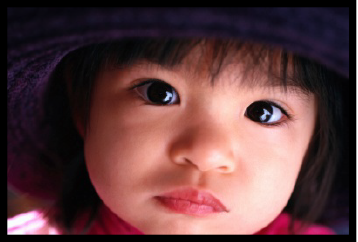Developmental Milestones
The first three years of life are a time of rapid growth and development. Although children develop at different rates, the majority of children meet developmental milestones or sets of skills within a certain age range (Berk, 2006). For example, most young children will sit alone between 5 and 9 months of age and begin to walk between 9 and 17 months of age (Berk, 2006). If a child has not walked by 18 months of age the child is experiencing a developmental delay.
Developmental Delay
A child is considered to have a developmental delay if they do not meet developmental milestones in one or more areas of cognitive, physical, communication, social, emotional or adaptive development (IDEA, Part C 632 5Ai) within a typical period of time. Developmental delays are generally an early warning sign that the child needs further observation and possibly a professional assessment. Discuss concerns with a health professional.
Most young children (under the age of 3 years) with developmental delays benefit from early intervention services. Therefore, it is important to recognize the early warning signs of possible delays. The following lists gives some early warning signs in the areas of large motor, fine motor, cognitive and communication, socialemotional, behavioral, hearing and visual development. This is not an all inclusive list but gives some common indicators.

Physical Concerns (large motor)
- Does not reach for or grasp objects by 3 to 4 months of age
- Floppy or overly stiff arms or legs at 7 months or older
- Unable to roll over by 7 months of age
- Preference for one side of the body
- Unable to sit upright in a child-sized chair by 12 months of age
- Unable to walk by 18 months of age
- Only walking on toes, not the soles of feet at age 2
Physial Concerns (fine motor)
- Uses a fisted position with both hands after 6 months of age
- Unable to clap hands by 12 months
- Does not reach or point by 12 months
- Unable to use a mature pincer grasp (thumb to index finger) by 18 months
Cognitive & Communication Concerns
- No interest in toys by 3 to 5 months
- Does not focus or pay attention to an activity compared to peers
- Does not look directly at person or object at 6 months
- Does not use gestures such as waving
- Is not babbling or trying to talk by 12 months
- Loss of speech or skills at any age
Social-emotional Concerns
- Does not smile by 3 months of age
- Avoids being held or resists soothing after 7 months of age
- Does not show enjoyment or affection to caregivers by 7 months of age
- Does not imitate adults
Behavioral Concerns
- Very sensitive to sound and/or touch
- Self-stimulating behavior such as rocking the body or hand flapping
- Aggressive or violent behavior on a daily basis
Visual Concerns
- Rubs eyes frequently
- Unable to follow objects or people with eyes by 3 months
- After 6 months has difficulty making eye contact, eyes appear crossed, or turned in or out all of the time
- Eyes appear abnormal in size or coloring
Hearing Concerns
- Has frequent earaches
- Does not appear to hear loud noises
- Turns body so the same side is always turned toward the sound
- Fails to develop sounds or words at appropriate age
Identifying Developmental Delays
Developmental delays are identified through playbased assessments. Usually a child goes through a development screening first to identify whether further evaluation is needed. If the screening suggests a developmental delay, a longer, in-depth developmental evaluation is conducted by a trained professional. Assessments include identifying the strengths and needs of the infant or toddler and determining appropriate services. A family-directed assessment is also conducted, and if services are needed a team of professionals creates an Individualized Family Service Plan (IFSP) which includes a variety of early intervention services (IDEA, Part C Section 636).
Early Intervention Services
Early intervention services can help a child with developmental delays progress in meeting developmental milestones. Nevada’s Early Intervention Services (NEIS) help to identify infants and toddlers who are at risk or who have developmental delays. NEIS offers many different services, such as physical and speech therapy.
Contact Project ASSIST at 1-800-522-0066 or visit the Bureau of Early Intervention Services website at: DPBH for more information.
References
- Allen, K. E. & Cowdery, G. E. (2005). The exceptional child: Inclusion in early childhood education. Clifton Park, NY: Thomson Delmar Learning.
- Berk, L. E. (2006). Child development. Boston, MA: Pearson Education.
- CASRC. (2008). How kids develop: Developmental delays. Retrieved from How Kids Develop
- Hallahan, D. P., Kauffman, J. M., & Pullen, P. C. (2009). Exceptional learners. Boston, MA: Pearson Education.
- Individuals with Disabilities Education Improvement Act (IDEA), Amendments of 2004, Pub. L. No. 108-446, 20 U.S.C. §1400 et seq. (Part C Section 636).
- Klein, M. D., Cook, R. E., & Richardson-Gibbs, A. M. (2001). Strategies for including children with special needs in early childhood settings. Albany, NY: Thomson Delmar Learning.
- WebMD. (2010). Recognizing developmental delays in children. Retrieved from Grow
Byington, T.
2010,
Recognizing Developmental Delays in Young Children,
Extension, University of Nevada, Reno, FS-10-66


